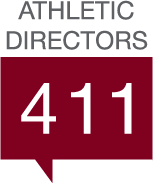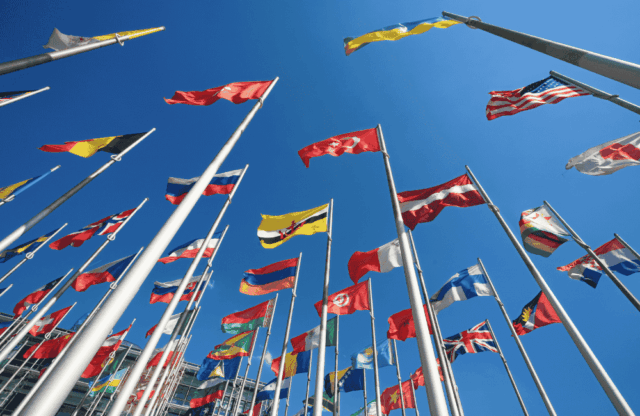The NCAA’s $2.7 billion settlement in House v. NCAA marks a turning point in college athletics. With revenue sharing now being implemented, athletic departments must undergo a new method of athlete compensation … but this new model brings a number of complications, one of which being that more than 25,000 international student-athletes, many of whom are on F-1 student visas, are now caught in legal limbo.
While U.S. athletes stand to benefit financially, international athletes face potential immigration violations simply for accepting payment. What was once a personal risk tied to NIL deals is now a compliance and legal liability for the institutions themselves.
The F-1 Visa Trap
Under current F-1 visa rules, international students are limited to specific types of employment: on-campus work, Curricular Practical Training (CPT), and Optional Practical Training (OPT). Each comes with strict conditions: N, none of which cleanly cover NIL or revenue-sharing models.
Even during the school year, student-athletes can’t exceed 20 hours of work per week. And any authorized employment must be directly tied to their course of study. NCAA-sanctioned sports participation doesn’t qualify. That means international athletes who get paid for playing — or for the use of their NIL in a game broadcast — could face visa violations.
Take Duke’s Khaman Maluach. A March Madness standout. A potential future NBA pick. But under visa restrictions, he’s blocked from monetizing his name or image like his U.S. teammates. Multiply that case across hundreds of programs, and the scale of the issue becomes clear.
When Risk Transfers from the Athlete to the Institution
NIL initially placed the burden on the individual athlete. But under the House settlement, when schools start distributing money directly to players, the risk shifts. Institutions are now liable if international athletes are paid in ways that violate immigration law.
The stakes are high:
- Violations of the Immigration Reform and Control Act (IRCA) can lead to civil and criminal penalties.
- Noncompliance could jeopardize federal funding.
- Lawsuits over national origin discrimination are a growing concern if payments are made selectively.
- Compliance missteps could also expose programs to media scrutiny and reputational damage.
The situation is past being hypothetical. It’s a regulatory tripwire that many departments are walking into unprepared.
Why Common Workarounds Don’t Work
Some schools are trying to sidestep the issue with creative tax or legal classifications. But immigration law doesn’t care about 1099s, W-2s, or contract terms.
Labeling payments as “independent contractor income” changes nothing — U.S. Citizenship and Immigration Services (USCIS) treats all compensated labor as employment. Likewise, arguments that revenue sharing qualifies as “passive income”, or “royalties” fall flat. Payments tied to game participation, performance, or media rights are clearly compensation for services. And for F-1 visa holders, that’s a problem.
Even attempts to “exclude” international athletes from compensation carry legal risks. Paying only domestic players could open the door to discrimination claims. And asking international athletes to “volunteer” for roles their U.S. teammates are paid for? Unethical and illegal.
Visa Alternatives Are No Silver Bullet
Some advisors suggest switching athletes to O-1 or P-1A visas. But these options are limited and impractical at scale. The O-1 is reserved for individuals with extraordinary ability (think Olympic medalists.) The P-1A visa, once viable for recognized international athletes, has become legally uncertain in 2024 following recent rulings.
For most programs, managing visa conversions for entire rosters is a logistical and legal nonstarter. And for the athletes themselves, the risk-reward calculation isn’t simple. Many will choose visa stability and long-term residency over short-term cash.
What You Should Be Doing Now
1. Audit Your Roster
- Identify all international athletes.
- Track existing NIL activity and upcoming revenue-sharing eligibility.
2. Consult Qualified Legal Experts
- Not just general counsel. You need immigration attorneys who understand college athletics and NIL law.
3. Establish a Clear Institutional Policy
- Define who’s eligible for compensation and who’s not.
- Build messaging that supports affected athletes and prepares them for tough choices.
4. Educate Your Athletes
- Host workshops on immigration compliance.
- Partner with DSOs to deliver accurate, actionable guidance.
5. Push for Policy Change
- Work with associations like the NCAA and NAFSA to advocate for DHS guidance or legislative updates.
- Join your government relations office in making this a priority issue for Congress.
Look Ahead, Not Away
The situation now demands more than just “avoiding penalties.” It demands protection and advocacy. These students came to America, despite facing potential struggles, to pursue opportunities and dreams; sitting still means leaving your international students behind.




